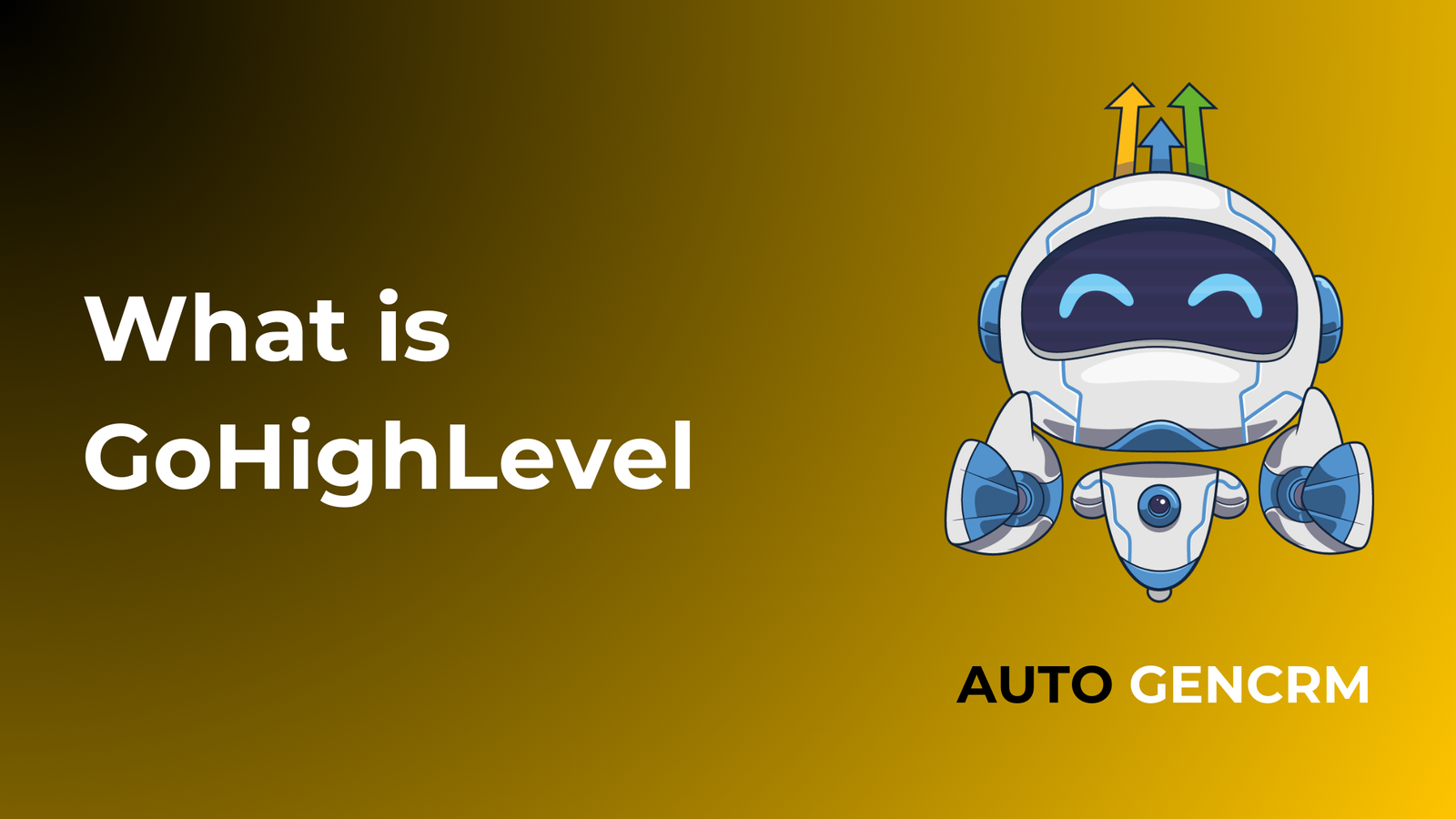You searched what is ghl because you want a clear answer without fluff. GHL stands for GoHighLevel. It is a single platform that replaces a stack of tools for funnels, forms, calendars, email, SMS, pipelines, and automation. Use it to capture leads, book calls, close deals, and serve clients in one place. This guide explains what GHL does, how it works, and how to set it up the right way on AutogenCRM.
What is GHL
GHL is an all in one marketing and CRM platform. It blends page building, messaging, and sales tracking so your team can run the full customer journey in one login. You can publish landing pages, take payments, send email and text, follow up with workflows, and track deals across a pipeline. It is built for agencies, service firms, and local businesses that want results without juggling many apps.
What you can build with GHL
- Lead capture funnels with forms and thank you pages that save source and campaign data
- Booking flows with calendars, reminders, and no show follow up to protect your schedule
- Sales pages and checkouts with order bumps and simple one click upsells
- Pipelines for deals and tasks so sales and support work from the same board
- Workflows that send emails, texts, and tasks based on events like form submit or payment
How GHL works day to day
Think of GHL as a live system. Visitors land on your page and fill a form or book a call. Contacts go into the CRM with tags, fields, and source values. Workflows send messages and create tasks at the right time. Deals move through stages so you always know what needs attention. Reports show conversion by step, bookings, show rates, revenue, and team activity. The goal is simple. Less manual work and more wins.
Core features explained in plain English
Funnels and pages. Drag and drop pages for leads, sales, and thank you steps. Keep one goal per page. Place your main call to action above the fold. Compress images for speed.
Calendars. Share a booking link, sync availability, and add reminders by email and text. Include a quick reschedule link to cut no shows.
Forms and surveys. Collect the data you need and store it on each contact. Use hidden fields for UTM source and campaign so reporting stays clean.
Workflows. Pick a trigger, choose actions, and set timing. Common flows include form follow up, booking reminders, and cart rescue for people who did not finish payment.
Pipelines and tasks. Move deals across stages from new to won. Assign owners, due dates, and notes so nothing is lost.
Email and SMS. Send broadcasts or automate messages inside workflows. Use short, clear copy. One message, one goal.
Setup checklist for AutogenCRM users
- Define one primary goal for the next thirty days. Leads or bookings or sales.
- Connect your custom domain and point your funnel to it.
- Add the payment gateway and create each product with a clear price.
- Build a simple funnel with a landing page, a form or calendar, and a thank you page.
- Add hidden UTM fields to your form so source and campaign save to the contact.
- Create a pipeline with stages that match your sales process.
- Write one workflow for form follow up and one for booking reminders.
- Test each step with real submissions to your own email and phone.
- Send a small batch of traffic and confirm that events and tags save.
- Open reports and note your baseline numbers for each step.
Pricing and account structure in simple terms
GHL offers account plans for single users and for agencies. Plans differ by features, user seats, and white label options. Choose a plan that matches your current stage. If you are an agency, use an agency plan to manage many client sub accounts from one place. If you are a single brand, a standard plan is often enough. Review your must have features, then pick the plan that covers those needs today. You can upgrade as you grow.
Common mistakes to avoid
- Trying to learn every feature at once instead of shipping one live funnel
- Long forms that ask for more data than you will use this week
- No tags or messy field names that break Smart Lists and reports
- Slow pages with large images and too many sections
- Skipping real tests before you send paid traffic
How to measure success
Pick numbers that match your goal. For a lead goal, track unique visitors, opt in rate, and time to first reply. For bookings, track booking rate, reminders sent, and show rate. For sales, track checkout starts, order rate, and average order value. Review weekly. Improve one weak step at a time. Small gains stack fast.
Where this fits on AutogenCRM
AutogenCRM is your home base for builds and training. Use this guide with your live sub account. When you finish the basics above, expand with deeper posts on our site like Workflows and Automation, Funnels and Websites, and Calendars and Booking at autogencrm.com. These pages show clear examples and ready to use structures that match the setup in this guide.
what is ghl in search intent
People who ask what is ghl want a clean answer and a path to action. They expect a definition, a short list of uses, and a simple way to set it up. That is what you have here. Use the checklist, publish one funnel, and let the numbers guide your next move.
Final thoughts
GHL is the simplest way to run marketing and CRM in one place. Build one clear funnel, connect calendars and payments, and let workflows handle follow up. Track a few key numbers and improve one step at a time. If you follow this plan on AutogenCRM, you will ship faster, waste less time, and see steady gains that you can repeat.

